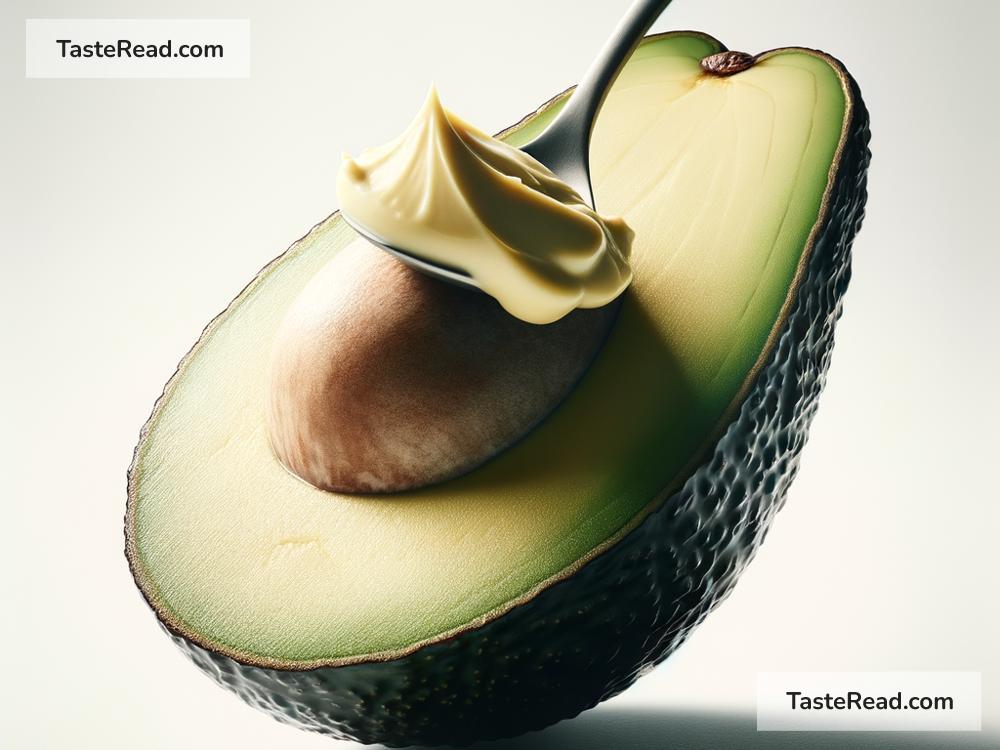Why Do Fruits Like Avocados Have Creamy Textures?
Have you ever bitten into a ripe avocado and wondered why it feels so smooth and buttery? Avocados stand out from other fruits because of their rich, creamy texture. While most fruits, like apples and oranges, are crisp or juicy, certain fruits—such as avocados, bananas, and custard apples—have a unique smooth and velvety feel. So, what makes these fruits creamy? Let’s dive into the fascinating science behind their texture and learn what sets them apart!
The Role of Fat in Creamy Fruits
One of the main reasons avocados are so creamy is their high fat content. While most fruits are low in fat and high in sugars or water, avocados are the opposite—they’re packed with healthy fats, particularly monounsaturated fats. These fats are what give avocados their buttery feel when you slice into them or spread them on toast.
Think of how butter, cream, or oils feel on your tongue—the smooth sensation is all thanks to fat. The fats in avocados act the same way. With every bite, the tiny fat molecules glide across your taste buds, giving you that luxurious, melt-in-your-mouth feeling. This is why avocados are often used as substitutes for butter and mayo in recipes—they’re creamy, rich, and also healthy!
Water Content Creates Balance
Just because avocados are high in fat doesn’t mean they’re dry. In fact, the secret to their texture lies in the perfect balance between fat and water. Avocados contain enough water to keep them soft and moist but not so much water that they feel juicy, like a watermelon.
Water and fat combine inside the avocado fruit to create an emulsion—a mixture where fat and water blend evenly together. This emulsion is what gives avocados their silky texture. Imagine mixing oil and water carefully so they don’t separate; the result is smooth and creamy, similar to how avocados develop their feel naturally as they ripen.
How Do Bananas and Other Creamy Fruits Compare?
Avocados aren’t the only fruits with creamy textures. Bananas, for example, are also known for their smoothness, but they feel different from avocados. Unlike avocados, bananas don’t rely on fat for their creaminess. Instead, bananas become creamy when their starches (a type of carbohydrate) break down into sugars as they ripen. These sugars dissolve easily in water and create a soft, velvety texture.
Other fruits, like mangos, papayas, and custard apples, achieve their creaminess through high water content combined with natural fruit fibers. These fibers soften as the fruit ripens, giving your tongue a smooth sensation. While these fruits may be creamy, they don’t have the same richness as avocados because they lack the high fat content.
Why Do Some Fruits Have Creamy Textures While Others Don’t?
You might be wondering why some fruits are creamy while others are crisp or juicy. The answer lies in each fruit’s unique role in nature. Fruits are designed to protect their seeds and attract animals to eat them so the seeds can be spread around. The texture of a fruit helps achieve this purpose.
For example, crisp fruits like apples and pears have a crunchy structure that keeps them firm and protective around their seeds. Meanwhile, creamy fruits like avocados and bananas may rely on their soft texture to appeal to animals (or humans!) who enjoy rich, easy-to-eat foods.
For avocados, their creamy texture plays another important role—they’re designed to be eaten when fully ripe so that their seeds (large pits) are ready for planting. The rich fats in avocados are also an excellent source of energy for animals and humans, making them an attractive fruit to eat.
The Ripening Process Is Key
Have you ever tried to eat an unripe avocado? It’s hard, tasteless, and nowhere near creamy. That’s because the creamy texture of an avocado develops as the fruit ripens. During ripening, enzymes inside the avocado break down the starches and fibers, softening the fruit. At the same time, fats become more evenly distributed, which helps create the smooth and buttery texture we love.
Similarly, bananas soften and turn creamy as they ripen, while other fruits like mangos and papayas release their juices and fibers, making their textures smoother.
Why Creamy Fruits Are So Popular
Fruits like avocados, bananas, and mangos are loved worldwide because of their delightful textures and versatility. Avocados are famous for being the star of guacamole, a healthy toast topping, or even an ingredient in smoothies and desserts. Bananas are perfect on their own or blended into creamy treats, while mangos add velvety sweetness to juices and tropical dishes.
Part of the appeal is that creamy fruits not only taste amazing but also provide important nutrients. For instance, avocados offer healthy fats, fiber, vitamins, and minerals. Bananas are rich in potassium and easy-to-digest carbohydrates. Their textures make them comforting to eat and easy to incorporate into different recipes.
Conclusion
Fruits like avocados have creamy textures because of their unique balance of fats, water, and fibers. These natural factors combine to create a silky, satisfying feel. Avocados stand out because of their healthy fats, while other fruits rely on ripening processes or starch breakdowns to develop their smoothness. Creamy fruits are a gift of nature—delicious, nutritious, and versatile.
So, the next time you enjoy an avocado or banana, take a moment to appreciate its texture and the science behind it. It’s incredible how nature creates such delightful foods for us to enjoy!


